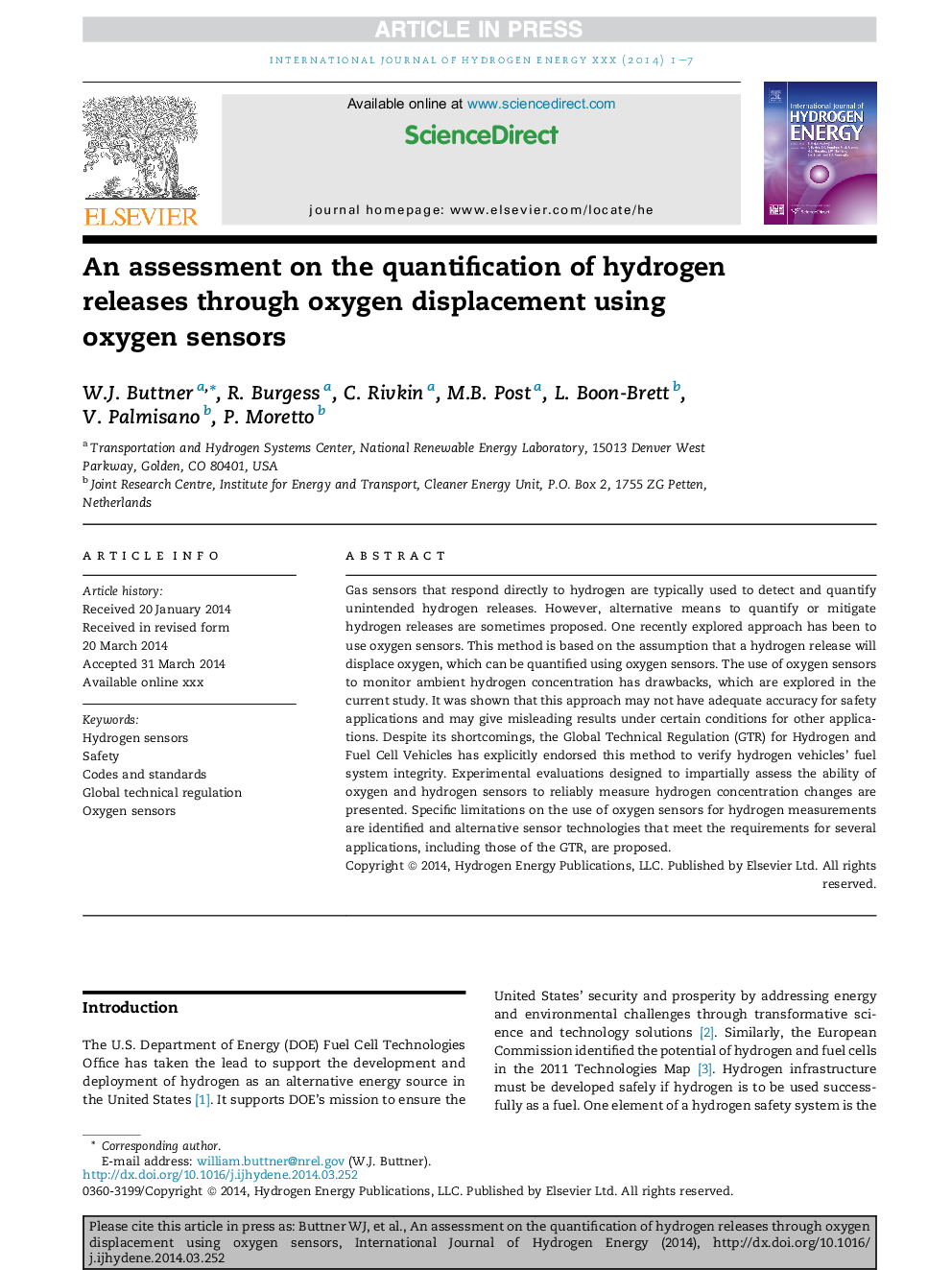| Article ID | Journal | Published Year | Pages | File Type |
|---|---|---|---|---|
| 7717974 | International Journal of Hydrogen Energy | 2014 | 7 Pages |
Abstract
Gas sensors that respond directly to hydrogen are typically used to detect and quantify unintended hydrogen releases. However, alternative means to quantify or mitigate hydrogen releases are sometimes proposed. One recently explored approach has been to use oxygen sensors. This method is based on the assumption that a hydrogen release will displace oxygen, which can be quantified using oxygen sensors. The use of oxygen sensors to monitor ambient hydrogen concentration has drawbacks, which are explored in the current study. It was shown that this approach may not have adequate accuracy for safety applications and may give misleading results under certain conditions for other applications. Despite its shortcomings, the Global Technical Regulation (GTR) for Hydrogen and Fuel Cell Vehicles has explicitly endorsed this method to verify hydrogen vehicles' fuel system integrity. Experimental evaluations designed to impartially assess the ability of oxygen and hydrogen sensors to reliably measure hydrogen concentration changes are presented. Specific limitations on the use of oxygen sensors for hydrogen measurements are identified and alternative sensor technologies that meet the requirements for several applications, including those of the GTR, are proposed.
Related Topics
Physical Sciences and Engineering
Chemistry
Electrochemistry
Authors
W.J. Buttner, R. Burgess, C. Rivkin, M.B. Post, L. Boon-Brett, V. Palmisano, P. Moretto,
